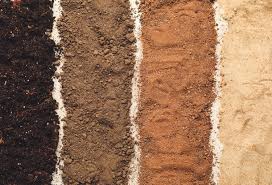Florida’s Unique Soil: Sandy, Salty, and Surprisingly Tricky — What It Means for Your Lawn
At Westfall's Lawn and Pest Control, we've walked more lawns than a mailman with a Fitbit. If there's one thing we know from years of turf-taming in Sarasota and Manatee counties, it's this: Florida soil doesn’t play by the same rules. It's sandy. It's salty. And it's got a personality all its own. Think of it as the Florida Man of soil types—unpredictable, stubborn, and oddly fascinating.
The Sand Beneath Your Feet
First, let’s talk texture. Most of Florida’s soil—especially here in our Gulf Coast communities—is sand. You can thank our peninsula’s ancient beachy beginnings for that. While it might be great for castles and flip-flops, sand is notoriously bad at holding water and nutrients. It’s like trying to pour coffee into a spaghetti strainer—most of it just runs through.
This means your lawn is constantly at risk of drying out, especially during our famous sunny streaks. It also means nutrients from fertilizers can leach away before your grass even gets a taste. Without proper care, you're left with thirsty, hungry turf throwing a chlorophyll tantrum.
Salty Situations
Next up: salt. Living near the coast has its perks—sunsets, seafood, and sea breezes—but those breezes sometimes carry a salty punch. Salt spray and salty groundwater can build up in your soil over time, especially in low-lying or poorly drained areas. Salt stresses out your grass like a snowbird stuck in July traffic. Roots struggle to take up water, blades start to brown, and you’re left with patches that look more “desert chic” than “Florida lush.”
Surprise! It's Also Alkaline
Here’s where things get tricky. Many areas in Sarasota and Manatee counties have alkaline soils—meaning the pH level is higher than what most grasses prefer. Alkaline soil locks up nutrients like iron, making them unavailable to your lawn even if they’re technically there. The result? Yellowing grass that seems like it’s on a hunger strike despite your best efforts.
So What Can You Do?
Now that we’ve sufficiently scared you with the science of soil, here’s the good news: you don’t have to figure this out alone. At Westfall’s, we know Florida’s funky soil like the back of our mulch-covered hands. Here’s how we help lawns thrive in this sandy, salty, surprisingly tricky environment:
Soil Testing: We start with a professional soil analysis to see exactly what your lawn is dealing with—pH levels, salinity, nutrient deficiencies, and more.
Custom Fertilization Plans: Based on your soil’s unique needs, we create a tailored fertilization program that includes slow-release nutrients, micronutrients like iron, and organic boosters to keep your lawn green and growing.
Watering Strategies: We’ll guide you on when and how to water, taking sandy drainage and seasonal rainfall into account. Spoiler: less frequent, deeper watering usually wins.
Salt Management: For lawns affected by salt, we recommend soil conditioners and salt-tolerant grass species to help your yard bounce back.
Aeration and Topdressing: To improve sandy soil structure, we offer services like core aeration and topdressing with compost to increase organic matter and water retention.
Don’t Fight Your Soil—Work With It
The key to a great Florida lawn isn’t fighting the soil—it’s understanding it. Your yard isn’t trying to be difficult. It’s just being, well, Florida. With the right approach, even the most stubborn Sarasota sandlot can be transformed into a vibrant, barefoot-worthy patch of paradise.
Ready to outsmart your soil? Give Westfall’s a call. Whether your lawn is suffering from salty roots, sandy struggles, or mysterious yellowing, we’ve got the tools—and the turf know-how—to make your grass greener on this side of the fence.


